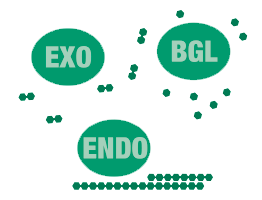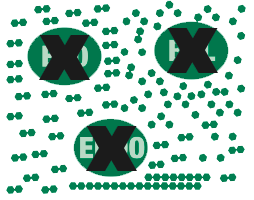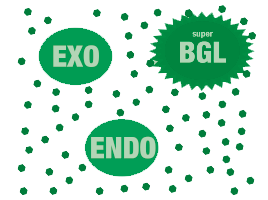Build new enzymes using SSV
SSV (Structural Signature Variation ) is a method to propose mutations for enzymes used in industrial applications. SSV uses structural signatures to detect patterns, which can improve the activity of enzymes. A real and important application for SSV is the second-generation biofuel production.
About
Case study: Second-Generation Biofuel Production

Cellulose is decomposed by the action of three enzymes: endoglucanases, exoglucanases, and β-glucosidases.

β-glucosidases are strongly inhibited by high glucose concentrations (same used for biofuel production).

In addition, it increases cellobiose concentration that inhibites endoglucanases and exoglucanases.

Glucose-tolerant β-glucosidases
β-glucosidases of high resistance to glucose inhibition, also called glucose-tolerants, can help to improve the biofuel production. Also, some mutations can turn non-tolerant in glucose-tolerant β-glucosidases.

SSV Method
SSV method constructs structural signatures for wild and mutant proteins and compares the signature's variation with a manually curated database of glucose-tolerant β-glucosidases, called Betagdb.
Documentation
Basic Flowchart of SSV

Solutions

Python scripts
You can download SSV sourcecode in Python and run on your computer. It requires: Python, MODELLER (if PDB files were not available), MULTIPROT (for structural alignment), and Perl (for running aCSM).

Running online
You also can test SSV online. It requires as input PDB files for wild mutant protein. SSV online returns the ΔΔSSV score. If ΔΔSSV > 0, the mutation was not beneficial; if ΔΔSSV < 0, the mutation was beneficial.
